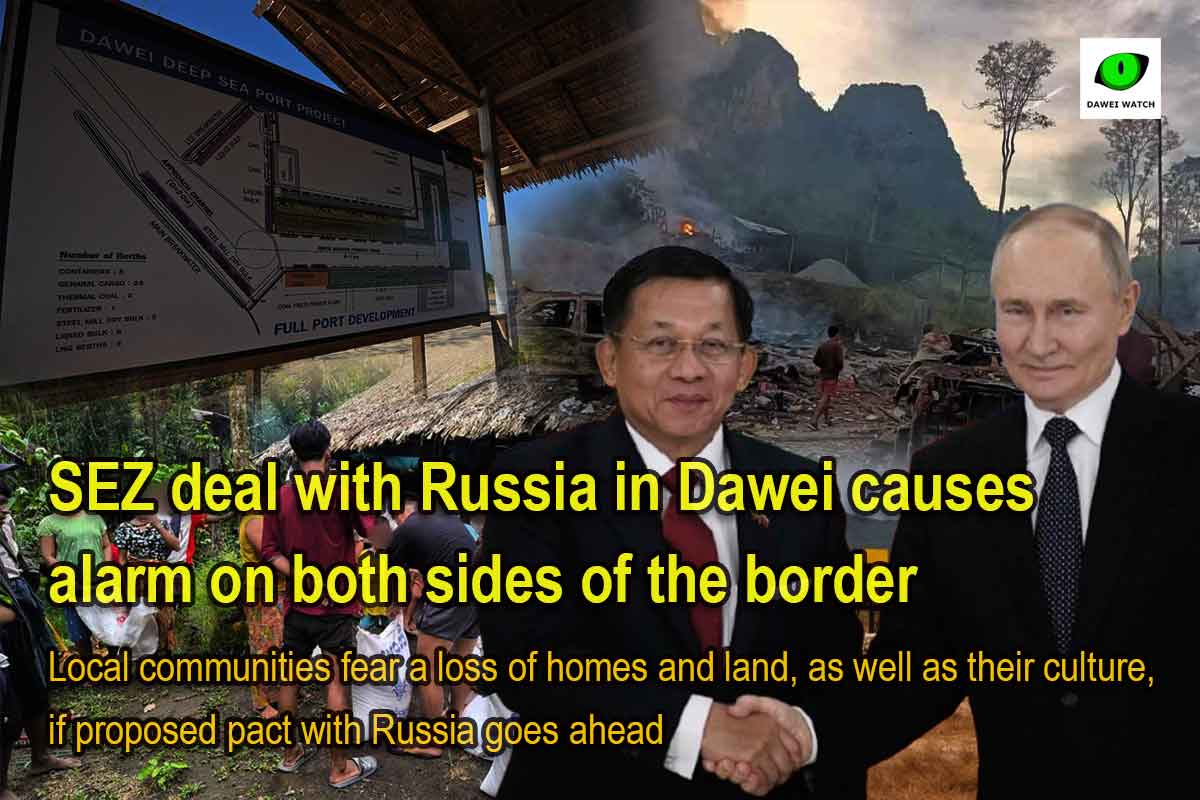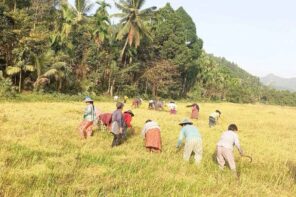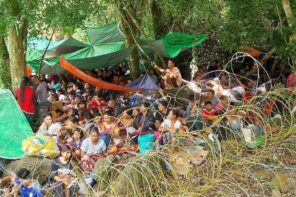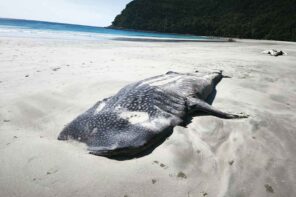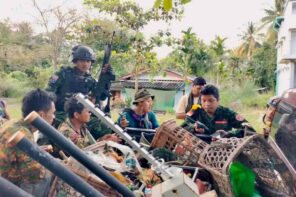In the conflict-scarred hills and coastal plains of Myanmar’s southern Tanintharyi Region, a decades-old project is resurfacing – not as a symbol of prosperity, but as a harbinger of fear.
The Dawei Special Economic Zone (SEZ), a megaproject once billed as a transformative gateway for Myanmar’s integration into global trade, is now being revived by the country’s military junta in partnership with Russia.
While originally promoted as an infrastructure and industrial development hub, recent developments have raised far more disturbing concerns – including the possibility that the SEZ may also serve as a launchpad for a nuclear power project along the coast.
For the local population, many of whom have already been displaced by war and previous iterations of the project, the SEZ has become a source of dread rather than development.
On paper, the agreement between the junta and Russia to resume the project was formalized through a Memorandum of Understanding (MoU), with plans to construct a deep-sea port, a coal-fired power plant and an oil refinery.
Little has been disclosed about the financial or environmental frameworks guiding the new deal, but one thing is clear: the project is moving forward at a time when the country’s political and security climate is anything but stable.
The timing has set off alarm bells. With armed conflict raging in many parts of the country and the military stepping up operations in the proposed SEZ zone, communities are once again on the move – not toward opportunity, but away from violence.
“If this project goes ahead, this land will be cleared. We won’t be able to live here like before,” said a resident of Ya Laing village, which lies near the planned development site.
A project with a troubled past
Launched in 2008 with Thai investment, the Dawei SEZ was initially promoted as a national infrastructure project that would bring roads, factories and foreign capital to one of Myanmar’s least developed regions.
But for many locals, the reality was starkly different. Villages were displaced, farmland was confiscated and compensation – when offered – was inadequate or absent.
Over the years, the project left behind a legacy of land disputes, environmental degradation and unresolved grievances. By the time the military took over in a 2021 coup, the SEZ was effectively dormant. Its revival under junta control has reignited old wounds – now made worse by the potential nuclear twist.
The absence of public consultation this time around has deepened those concerns. The junta-appointed Chief Minister of Tanintharyi Region, U Myat Ko, has even declared that anyone who opposes the Dawei SEZ is “not a true Tavoyan,” framing opposition as a betrayal of ethnic identity and applying psychological pressure on an already vulnerable population.
“This isn’t development. It’s like selling off our homeland,” said one local. “They’ll probably bring outdated equipment and factories – old machines and facilities Russia no longer wants.”
Nuclear fears enter the equation
On May 10, 2025, the Karen National Union (KNU) issued a stark warning about a separate but related plan by the military junta to build a nuclear power plant with Russian support – potentially in Bago or along the Dawei coast, opposite Kanchanaburi province in Thailand.
KNU spokesperson Padoh Saw Taw Nee told Transborder News that this plan posed grave threats, not only to Myanmar citizens, but also to Thai communities across the border.
“This will affect not only the Karen people, but also Thai citizens. General Min Aung Hlaing’s meeting with Russian leaders to plan a nuclear power plant is extremely dangerous. Myanmar has abundant natural gas and energy resources, yet they choose nuclear,” he said.
“This could be linked to Myanmar’s nuclear weapons development plans in Naypyidaw.”
The KNU believes Dawei’s coastal location – crucial for nuclear cooling systems – makes it an ideal site in the junta’s eyes, and noted that the plan may be tied to earlier, abandoned nuclear ambitions from the Naypyidaw era.
Now, with Russian backing, what was once a dormant dream may be inching toward reality.
“They disregard humanity and now pursue nuclear. Thai people are at great risk. We urge Thais to closely watch this plan,” said Padoh Saw Taw Nee.
A fragile ground for mega-development
Military operations have intensified in the Dawei SEZ area in recent months. Junta troops have been pushing into zones controlled or influenced by resistance forces, resulting in increasingly frequent clashes. Entire communities have been forced to flee, and many more are preparing to do so.
“The army comes in, we run. When they leave, we come back and try to work. But if the SEZ starts, we’ll have to flee for good,” said another local.
Many residents believe the military’s activities around the SEZ are not coincidental. Some suspect the ongoing offensives are aimed at clearing the land to make way for the SEZ.
Their fears are not unfounded. During earlier phases of the SEZ, villagers were evicted with little or no warning. Now, with the state of law and judicial redress nearly nonexistent under junta rule, communities feel even more vulnerable.
As one local resident said: “Because they (Russia) will be working with the military, we locals won’t receive any benefits. What they will give is only suffering.”
“They’ll just take the land if they want it,” one woman said. “They’ll come with guns. Even the compensation – you get it only if they feel like giving it.”
For many families, the psychological burden is as heavy as the material loss. A woman from Paradat village explained how she and her husband had already sent their children to Thailand for safety.
“We’re left with only our small rubber plot. That’s all we have to live on now,” she said. “When the troops push in, we run. But there’s nowhere left to run anymore. If we die, we die here.”
A coordinated local rejection
However, civil society groups in Tanintharyi are not sitting idle. On March 10, 2024, 11 organizations – including political and environmental groups – issued a joint statement condemning the SEZ’s revival. Their concerns span human rights, environmental risks and the lack of meaningful consent from local communities.
“This project has a long history of unresolved land disputes and compensation issues,” said Mae Hsu, Director of the MAGGA Initiative.
“Now, in a time of political instability and without the rule of law, pushing it forward again – without transparency or accountability – will only result in further human rights violations and forced displacement.”
She said the resumption of the SEZ not only threatens to displace people, but also to erode the cultural and ecological integrity of the region. The project site, she explained, overlaps with the ancestral lands of the Dawei people and is home to rare ecosystems.
“If the SEZ goes ahead, it will destroy everything – livelihoods, heritage and the environment,” she added.
Civil society representatives also expressed their concerns. “From the beginning, this project was never suited to our needs. It brought corruption, rights violations and land disputes – none of which have been resolved to this day.”
Russia’s motives under scrutiny
Observers have also questioned Russia’s commitment and underlying intent. While the junta has presented the project as a foreign investment win, some analysts say the Kremlin’s interest likely stems from a military and geopolitical view – not economic strategy.
“There isn’t much trade between Myanmar and Russia,” the director of the MAGGA Initiative noted. “This seems less about development and more about building a political and military alliance.”
There are also concerns about the kind of technology and industrial standards Russia may bring to the table. Many of those interviewed expressed fears that outdated, second-hand equipment might be dumped in Dawei to build environmentally hazardous infrastructure such as coal power plants and oil refineries.
“There will be no cutting-edge factories here,” said one. “Just the dirty leftovers of another country’s industry.”
Roadblocks ahead
Even as the junta presses forward, the project faces immense logistical, financial and security challenges. Much of the proposed SEZ area remains contested by armed resistance forces, and the lack of stability makes investment risky.
“There are too many difficulties to implement this project now,” a local organizer said. “There’s no peace. And who would be willing to come and live here to work on this?”
Furthermore, the issue of security raises questions about Russia’s direct involvement. While Russia might offer technical aid, it’s been suggested they are unlikely to deploy large numbers of private security forces due to their involvement in the Ukraine conflict, as well as potential challenges with Myanmar’s climate.
This places the burden of security largely on the Myanmar military.
While some Russian companies may show interest, direct government involvement appears unlikely, further clouding the project’s feasibility.
Still, many fear the junta may attempt to proceed regardless of the risks – using military force if necessary.
A fight for the future
The stakes are not only material. For the people of Dawei, the SEZ represents a deeper loss: the erosion of their identity, culture and voice.
“This is where our roots are,” one local said. “Our language, our traditions – they live in this land. If we lose this place, we lose who we are.”
Despite the overwhelming pressure, local communities remain determined to resist.
“If this project is forced on us and the people do not accept it, we will stand with them,” a civil society leader affirmed.
As Myanmar’s military government races to secure deals abroad, the people of Dawei are fighting for something far more fundamental – their right to remain on the land they have called home for generations.
“We will oppose it through every possible means,” the civil society leader added.

